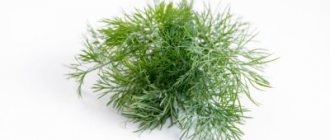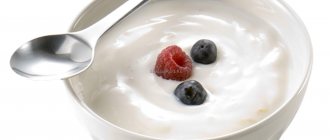Mushroom soup for children
After a year, the child’s diet expands greatly.
Growing up, the baby no longer just needs nourishing and nutritious food, but also varied food. When trying to introduce new products, it is worth finding out at what age you can give them to your child, in case they cause him harm. Many people cook various soups from borscht to kharcho. One of many people’s favorite soups is mushroom soup. When can children be given mushroom soup, because it is famous for its high protein content and in vegetarianism replaces meat broth.
Composition of mushrooms: benefits and harms
Mushrooms are very rich in various substances in their composition. They contain compounds beneficial to the body:
- Vitamins A, B1, B2, C, PP.
- Microelements: potassium, necessary for the stable functioning of the heart muscle, and calcium, an important “building block” for the formation of the skeletal system and baby teeth.
- Phosphorus is a necessary element for the development of brain activity. In terms of its quantity, mushrooms are close to fish products.
- There is so much protein that sometimes an analogy is drawn between mushrooms and meat.
- Enzymes - lipase and amylase.
However, mushrooms also contain chitin, which makes them a difficult food to digest. Chitin is the main component of the shells of snails, crayfish and crabs. It’s hard to imagine that our stomach could digest this, much less a child.
The structure of mushrooms resembles a sponge; they absorb harmful substances from the soil and environment. The environmental situation in many areas of the country leaves much to be desired, so it is worth introducing mushrooms grown in greenhouses: champignons or oyster mushrooms into your child’s menu. For forest mushrooms, you need to clearly know in which area they were collected, what the distance was from roads and railways.
When can you introduce your child to the taste of mushroom soup?
On the question of when you can start feeding children mushroom dishes, in particular soup, the opinions of experts differ somewhat. Some consider it quite possible to consume mushroom soup from the age of three, while others do not recommend introducing mushroom dishes into the menu until the age of six or seven.
The frequency of mushroom soup appearing on a child’s menu should be small. Mushroom soup prepared from high-quality, proven products can be given to children once every two to three weeks. It is better to start with a puree soup made from mushroom broth. The mushroom decoction should be diluted with water and based on it, cook the baby’s usual vegetable soup.
Further:
Hello girls! Today I will tell you how I managed to get in shape, lose 20 kilograms, and finally get rid of the terrible complexes of fat people. I hope you find the information useful!
Do you want to be the first to read our materials? Subscribe to our telegram channel
Mushrooms are very rich in various substances in their composition. They contain compounds beneficial to the body:
Mushroom poisoning
There is always a risk of mushroom poisoning for a child, especially a small one. The danger exists both when consuming fresh and canned foods. Even completely harmless for an adult, they can be poisonous for a baby, whose body is hypersensitive to toxins. Some products enhance their toxic effect. For example, it is not recommended to drink sour juice, as acid increases toxicity.
The first signs of mushroom poisoning are a metallic taste in the mouth, nausea, severe vomiting, diarrhea, and abdominal pain. In severe poisoning, convulsions, hallucinations appear, and constriction of the pupils occurs. If you suspect poisoning, you must call an ambulance.
Before the ambulance arrives, the child is given gastric lavage, an enema, and given activated charcoal to drink. Emergency doctors need to accurately explain the cause of poisoning so that assistance can be provided most effectively.
Video: Forest mushroom poisoning
Advice:
The systematic inclusion of mushrooms in a child’s food can lead to gastritis. Children are unlikely to be able to appreciate the taste characteristics of mushroom dishes, and it is much easier to get nutrients from other foods (meat, fish, vegetables and fruits). At least until the age of 7 (by this age the formation of the digestive system ends), and even better, it is advisable not to give mushrooms until the age of 10.
Julia asks: “Hello. My son is 2.6 years old (not allergic). Is it possible to give light mushroom soup at this age?
There is no consensus on the timing of introducing mushrooms into children's diets. According to some experts, they are approved for use from the age of 3. Others claim that only from 5-7 years of age, or even from 10 years.
The reason for the disagreement is explained by the composition of the product, which is undoubtedly beneficial and nutritious for the child’s body. Mushrooms contain a lot of vegetable protein (which allows us to call them “vegetable meat”), vitamins PP, A, group B, ascorbic acid and minerals necessary during the growth period (calcium, phosphorus, potassium).
On the other hand, they contain chitin and fiber, which are practically not digested and cause digestive problems even in adults. But the main thing is that mushrooms grow quickly and, like a sponge, absorb all the environmental “garbage” from the environment.
In six months, your baby will reach the acceptable age limit for preparing children's dishes with mushrooms. Take your time, as other products offer the same benefits without putting as much strain on your digestive system.
The first acquaintance, as you wrote, is better to start with a light soup. More precisely, cooked in a decoction diluted with water, but without the mushrooms themselves. Using the broth as a basis, you can also offer your child a sauce for the main dishes.
A few tips will help you avoid mistakes in selection and preparation:
- Buy mushrooms grown in artificial conditions. While their range is small, but safe: champignons and oyster mushrooms.
- Use mushroom caps to prepare children's dishes. They have more nutritional value, less chitin and mushroom threads.
- Before cooking, oyster mushrooms and champignons should be finely chopped if they are intended for feeding a child. This way you will also chop the mushroom threads, which give the product density.
- Children digest and absorb pureed soups more easily.
- Mushrooms should be a rare guest on the menu. It will be enough to treat your child to soup 2 times a month.
Do not buy oyster mushrooms and champignons from private individuals or in spontaneous markets, since it is almost impossible to obtain reliable information about the conditions for their cultivation.
Do not risk your baby's health by offering him mushrooms grown in the natural environment. Even confident experts on edible mushrooms can make mistakes.
Reading time for this article: 10 min.
Mushroom soup and potatoes with mushrooms can be safely called, if not traditional dishes of Russian cuisine, then certainly folk delicacies. Many parents and their children are not averse to going on a “quiet hunt” on a summer or autumn day. But is it possible to treat ourselves to “booty” together? The question is complex, but extremely important, so let’s try to answer it.
At what age can you give your child mushroom soup?
Parents of young children do not always know at what age they can be given mushroom soup. Very often it is ignorance of this fact that leads to poisoning of a child with mushrooms. It is no secret that this product is quite difficult to digest even in the case of adults, not to mention children.
A child's digestive system can be considered mature by about 8 years of age. In addition, in a child of primary preschool age, the detoxification system is also poorly formed. That is why adults should refrain from including mushroom soup until the child grows up. Even in small portions, you should not offer this dish to your children.
It is worth remembering that mushrooms contain not only proteins, vitamins and minerals, but also poorly digestible dietary fiber. They make it difficult to absorb other nutrients.
After your child turns 7-8 years old, you don’t need to spoil him with mushroom soup often. This dish can be offered no more than once every six months. In this case, you need to carefully monitor how the child’s body accepts the new dish. In this case, the individual sensitivity and tolerance of the child’s body plays a great role.
When introducing mushroom soup into your child’s diet, you need to follow some rules that will help avoid the appearance of dangerous signs. First of all, you need to know that the portion should be small. The second very important rule is that soup for a child cannot be prepared from all types of mushrooms. The ideal option is champignons, which are free of toxins. In addition, they are easily digestible.
Also read: How often should a baby move?
Puree soup for a child should be prepared with mushroom broth. The decoction obtained from the mushrooms should be diluted with the required amount of water and based on it you need to prepare the usual soup with vegetables. If desired, you can prepare the soup with the addition of cream. In this case, the dish will be more tender, and the pleasant aroma and rich taste will certainly attract the child’s attention.
Thus, it is clear that parents of young children should understand that there is no need to introduce mushroom soup into their diet early, since this step carries a certain amount of risk to children's health. There are many other healthy and tasty dishes that will bring invaluable benefits to a growing body.
Puree soup for a child should be prepared with mushroom broth. The decoction obtained from the mushrooms should be diluted with the required amount of water and based on it you need to prepare the usual soup with vegetables. If desired, you can prepare the soup with the addition of cream. In this case, the dish will be more tender, and the pleasant aroma and rich taste will certainly attract the child’s attention.
At what age can champignons be given to children?
Many adults like dishes with mushrooms, but when a child appears in the family, mothers often hesitate to cook mushroom soup or potatoes with mushrooms for the family, knowing that the baby will probably want to try such food.
Opinions about the age of including mushrooms in children's diets differ among both parents and doctors. And if almost everyone has a rather wary attitude towards wild mushrooms, then there is debate about the possibility of children consuming champignons. Some argue that these mushrooms are much easier to digest than forest mushrooms and can easily be included in children’s menus if you choose and prepare them correctly. Others are sure that children do not need any mushrooms, not even champignons. Let's figure out when you can prepare a dish with champignons for your baby and whether such mushrooms are healthy for children.
Mushrooms in children's diets: pros and cons
It is difficult to dispute the benefits of mushrooms, because they really are a source of vegetable protein, fiber, valuable vitamins and microelements. Potassium, calcium, phosphorus, iron, magnesium, sodium - this is not the entire list of useful substances found in mushrooms. In terms of the quantity and quality of the minerals that make up mushrooms, scientists equate them to fruits; protein allows mushrooms to replace meat in nutritional value, and carbohydrates to replace vegetables. Substances such as beta-glucans and melanin have a positive effect on the immune system and prevent the occurrence of malignant tumors.
However, to get to the valuable composition of mushrooms, the digestive system has to work hard. The difficulty in assimilating this product lies in the presence of a substance – fungin. The chemical composition of fungin is similar to chitin, which is part of the shell of crayfish, crabs, snails and some insects. Such a task is sometimes beyond the capabilities of even an adult body, and preschool children do not have enough enzymes in their stomachs necessary for this. Dietary fiber from mushrooms also has a coarse structure, which makes it difficult for children to absorb them.
In addition, the spongy structure of mushrooms is often the texture that absorbs toxins from the environment. Alas, the state of forests today leaves much to be desired. Even if parents decide to feed their child mushroom soup, it is better to cook it not from forest representatives, but from greenhouse champignons or oyster mushrooms.
Composition of mushrooms
Before deciding at what age you can safely give your child mushrooms, and whether this can be done, we recommend that you find out their composition. The product contains:
- A protein that is comparable in nutritional value to that found in meat. Proteins in 100 g of meat are comparable in nutritional value to 1 kg of protein. mushrooms The only difference between the products is that mushroom fiber is poorly digestible and difficult to digest in the stomach.
- Carbohydrates are in small quantities, the absorption of which is complicated by the same fiber.
- Fats that are quickly absorbed in the stomach. Champignons, saffron milk caps and porcini mushrooms contain the largest amount of fat.
- Sugary substances that give the product a pleasant taste.
- Essential oils that provide a persistent mushroom aroma.
- Resins responsible for the specific pungent taste.
- Lactic, butyric, oleic, stearic, acetic and other organic acids.
- Enzymes and minerals, including potassium and phosphorus.
- Niacin, vitamins D, A, C, groups B and PP.
- Amino acids, animal starch glycogen, lecithin, beta glucans and water.
Where to begin
The optimal age when you can feed your child mushroom soup is 7-8 years. Some parents, at their own risk, start at the age of five, but in this case, under no circumstances should you offer soup cooked for the whole family. The first mushroom soup in a baby’s life should not contain mushrooms themselves, but only their broth with a set of vegetables familiar to him. This can be a puree soup, and to prepare it, the mushroom broth must be diluted by half with water. The mushroom aroma is so strong that it will certainly attract the child's attention to the new dish.
Gradually, you can introduce chopped mushrooms into the children's diet, but nutritionists recommend adding cream to mushroom soup. They will make the first dish more delicate in taste and make it easier to digest. It must be said that not all mushrooms are suitable for baby food. It would be better to start with champignons, since they do not contain toxins and are considered easier to digest. It is important not to rush things and offer the child a small portion for the first time, observing his reaction. Even if everything is in order, it is not recommended to give mushroom soup to children more than once every 2 to 3 weeks.
It is difficult to dispute the benefits of mushrooms, because they really are a source of vegetable protein, fiber, valuable vitamins and microelements. Potassium, calcium, phosphorus, iron, magnesium, sodium - this is not the entire list of useful substances found in mushrooms. In terms of the quantity and quality of the minerals that make up mushrooms, scientists equate them to fruits; protein allows mushrooms to replace meat in nutritional value, and carbohydrates to replace vegetables. Substances such as beta-glucans and melanin have a positive effect on the immune system and prevent the occurrence of malignant tumors.
Mushrooms in the diet of children
When can forest products be introduced into a child’s diet? According to doctors, doing this before 2 years is categorically not recommended. As for children from 2 to 5 years old, mushrooms are introduced into their menu in limited quantities and gradually.
- This must be a store-bought product.
- First, mushrooms are served as an addition to the main dish, using them, for example, as a sauce.
- A little later, the baby is offered peeled, chopped and boiled mushrooms no more than once a week. You can make broth, puree soup or regular soup from them.
At what age can children be given mushrooms? The optimal age is 7-8 years. By this time, babies have a fully formed digestive system and a fairly strong immune system. If a child has problems with the intestines, stomach and other internal organs, it is better to abstain from the product until the age of 10.
Can small children eat mushrooms: Dr. Komarovsky (video)
Mushroom soup for children
After the child turns one year old, his diet expands significantly. The baby is growing and his body needs food that is not only satisfying and nutritious, but also varied. When planning to introduce new dishes to your child’s menu, you need to find out when they are allowed to be served so that they do not harm the child’s body. In this article we will look at the age at which mushroom soup can be given to children.
Everyone knows that proper nutrition should include first courses. That's why mothers cook various soups for their children. One of many people's favorite first dishes is mushroom soup. Is it possible for children to have mushroom soup, and at what age is it allowed to be included in the baby’s menu, because it is known for its high protein content and can replace meat broth in vegetarianism.
Also read: What You Can Drink During Pregnancy for Colds and Fever
At what age can children have mushroom soup?
Many parents ask the question: is it possible for a 1-year-old child to have mushroom soup? It is advisable to wait a while with this dish. Pediatricians do not recommend introducing a baby to mushrooms before he turns 3 years old, but be especially careful. And some even recommend not giving this dish to a child until he reaches school age.
Here are some tips regarding the use of mushrooms by children:
• The body of a three-year-old baby cannot cope with the digestion of such rough food, for this reason he can only occasionally be given vegetable puree soup, which is prepared in mushroom broth. Therefore, giving mushroom soup to children under 3 years of age is extremely undesirable.
• Children should eat this soup no more than two to three times a week.
• In a child’s diet, it is better to use mushrooms that are grown under artificial conditions, for example, mushroom soup made from champignons would be a good option.
• It is better to add sour cream or cream to such a first course, thanks to this the process of assimilation of a heavy product will be easier.
• It is recommended not to offer pickled and salted mushrooms to children under 14 years of age.
• Mushrooms should be subjected to long-term heat treatment to prevent harmful substances from entering the body.
• It must be taken into account that the child’s body’s reaction to mushroom dishes can be most unexpected. Often, poisoning with such a product occurs when consuming the simplest edible mushrooms.
• Of course, you shouldn’t panic if a small child accidentally tries a spoonful of mushroom soup from his mother’s plate, but you definitely need to monitor his body’s reaction to such a delicacy.
Evaluate the advantages and disadvantages of your child eating mushroom dishes and decide when to introduce him to a new dish. Of course, offering mushroom soup to a child aged 2 years or earlier is highly not recommended, but at 5 or 7 years old you can gradually introduce a new dish into his diet.
At what age can it be given?
It is difficult to answer this question clearly. First of all, you need to be guided by common sense and the recommendations of experts. The fact is that children’s bodies produce little or no enzymes that break down fungi. This product is definitely not indicated for children of any age with problems with fermentation and gastrointestinal tract.
Expert opinions also vary. Therefore, there are the following / there are such recommendations depending on the age and health status of the baby.
0 – 2 years. The vast majority of doctors recommend not giving children mushrooms in any form as food. However, some parents and doctors still believe that when transferring babies to a common table, already at the age of one and a half years, crushed fungi will not hurt.
From 2 to 5. In this age category, medical representatives are not so categorical. Some people don’t mind the “mushroom menu” already at 2-3 years old. Other experts recommend this diet from the age of five. The main rule is no more than once a week and in very small pieces.
Age – 7 years. It is considered quite safe to get acquainted with forest gifts and their “cultural” counterparts. During this period, children’s digestive organs are already formed. The previous recommendations remain in effect. It is better to give mushroom dishes no more than 2 times a week.
Age – 10-13 years. The right time to try mushroom dishes is if the child is sick or has problems with the gastrointestinal tract. In any case, you need to approach such food with caution to avoid harm.
It is strictly not recommended to give marinated, fried, or salted mushrooms to children.
Mushrooms in a child’s diet: pros and cons
The benefits of mushrooms are undeniable, since they are actually a source of vitamins, fiber, vegetable protein and other useful elements. Iron, magnesium, calcium, potassium, sodium, phosphorus - this is not a complete list of trace elements found in mushrooms. In terms of qualitative and quantitative mineral composition, scientists equate mushrooms with fruits. In terms of nutrients, mushrooms are similar to meat products, have a beneficial effect on the immune system and prevent the formation of cancer.
But to get to the beneficial substances of this product, the digestive system needs to spend a lot of effort. The difficulty of assimilation of mushrooms is due to the presence of an element such as fungin. Its chemical composition is similar to chitin, which is found in the shells of crayfish, snails, and crabs. Such a task can sometimes be difficult even for an adult’s body, but babies’ stomachs lack the enzymes necessary for this function. The dietary fiber contained in mushrooms also has a coarse structure, which makes their absorption by the child’s body more difficult.
In addition, the spongy structure of mushrooms very often represents a texture that absorbs toxic substances from the environment. Unfortunately, the state of forests today cannot be called ideal. Even if parents decide to treat their baby to mushroom soup, it is advisable to prepare it not from mushrooms collected in the forest, but from oyster mushrooms or champignons grown in a greenhouse.
Where to begin?
The best age to introduce mushroom soup to a child’s menu is considered to be 7-8 years old. Many, at their own peril and risk, give this dish to children over 5 years old, but even in this case, you should not offer soup that was cooked for the rest of the family. It is necessary that the first soup in a child’s life does not contain mushrooms themselves, but only a broth made from them with a set of vegetables that the baby is already accustomed to. This could be, for example, puree soup. In addition, mushroom broth should be diluted with water to prepare it. The aroma of mushrooms is so pronounced that it will definitely attract the baby’s attention to an unfamiliar product.
Mushrooms: benefit or harm?
Mushrooms contain many beneficial substances:
- Vitamins: PP, A, B1, B2, C, D.
- Microelements: potassium, calcium, chlorine, iron, sulfur and phosphorus.
- Large amount of protein and fiber.
- Urea.
- Glycogen.
- Enzymes: lipase and amylase.
Due to the significant amount of phosphorus and protein in mushrooms, they are quite capable of replacing meat and fish dishes for vegetarians.
Despite the obvious benefits of mushrooms, we also mention the dangers associated with their consumption.
1. The microelements chitin and fungin, which are part of mushrooms, make them difficult to digest. Therefore, the body will have to make a lot of effort to absorb all the beneficial substances.
2. Mushrooms are capable of absorbing all harmful substances from the environment where they grow.
Benefits of mushrooms
Due to possible problems with absorption, many adults classify mushrooms as a useless food that should not be offered to children at all. However, quality mushrooms have quite high nutritional value. They provide the human body with vegetable proteins, fiber, vitamins C, PP, D, A, group B, calcium, easily digestible fats, potassium, phosphorus and many other compounds. In addition, champignons are a source of enzymes and organic acids.
It should be noted that most of the beneficial substances in mushrooms are concentrated in their caps, and chitin, which is harmful to the child’s body, is more present in the legs. For this reason, only mushroom caps are suitable for baby food.
Where to collect and how to process mushrooms for consumption?
To protect yourself as much as possible from poisoning, you need to know the rules for collecting mushrooms.
Autumn mushrooms are the least toxic, so it is preferable to collect them at this time of year.
You cannot “hunt” near power lines, highways, landfills and other objects that create a negative environmental background.
To collect mushrooms, it is better to choose a place far from the city.
Do not put large mushrooms in the basket, you will not get any benefit from them; give preference to small and dense mushrooms with a small cap and stem without damage.
And, of course, collect only those mushrooms that are familiar to you, and avoid dubious ones.
Processing mushrooms must be done immediately after returning home (no later than 3-4 hours after collection). You need to do this correctly:
- To begin with, they should be washed and peeled from the peel on the cap and stem and the so-called “fringe” under the cap.
- You should not keep mushrooms in water for a long time; the protein compounds will be “washed out” of them (3-5 minutes will be enough).
- But mushrooms that are being prepared for drying should not be soaked at all.










